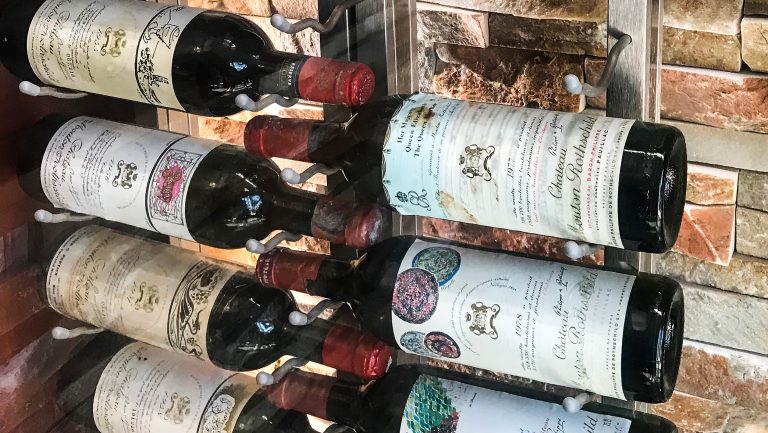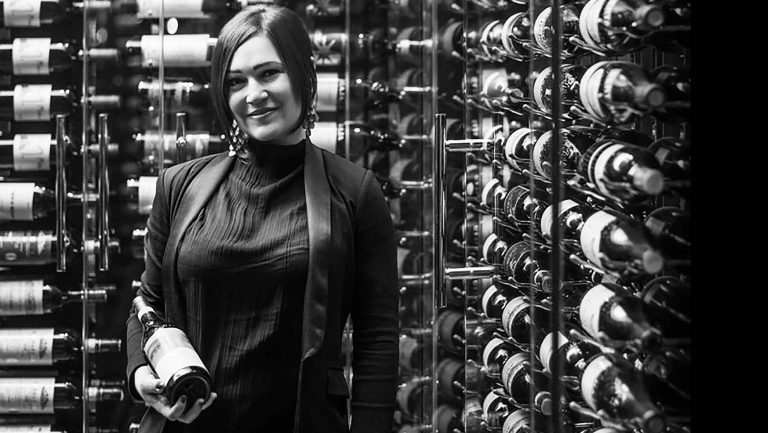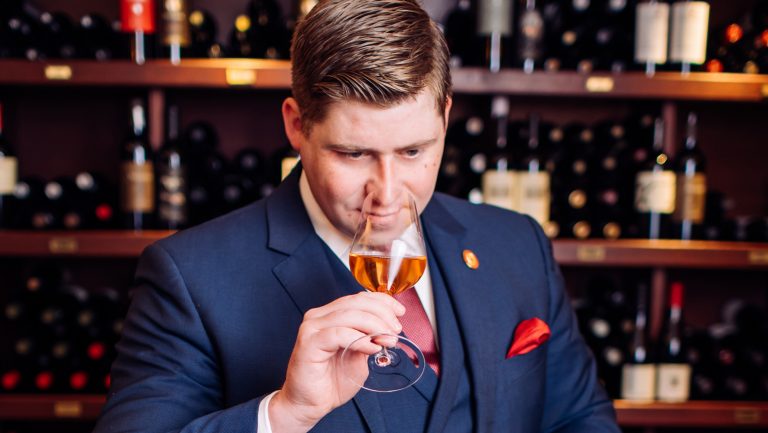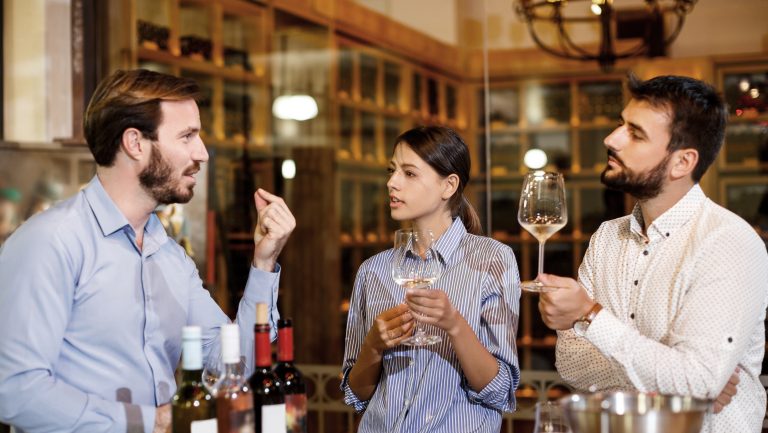Nothing intrigues wine-loving guests more than a wine list full of back-vintage bottles. Iconic wine programs like those of Bern’s Steakhouse in Tampa, Florida, and Pappas Bros. Steakhouses in Houston and Dallas have become known for their depth of aged wines. Other, newer establishments, like Marta in New York City, which has a reserve list of old Italian wines, and St. Anselm in Washington, D.C., which lists older wines from classic regions at more approachable price points, draw guests in with limited, aged selections that complement current releases.
At Augustine Wine Bar in Los Angeles, which opened in February 2015, offering vintage wines by the glass was an important part of the program’s philosophy from the start. “This allows us to offer our guests a taste of the history that had only been afforded to the wealthy or on fancy wine lists around the world at big prices,” says Matthew Kaner, the wine director and co-owner of Augustine Wine Bar, Bar Covell, and Good Measure in L.A. “Our vintage wines by-the-glass chalkboard [menu] changes daily.”
It’s a strategic way to attract attention to the wine program, but how do buyers manage to acquire these bottles in the first place? The means of obtaining sound back-vintage wines for a restaurant program depend on state-specific laws, but if such acquisitions are permitted, it’s important to know that some methods result in more reliable wine quality than others. SevenFifty Daily spoke with experts who specialize in acquiring back-vintage wines to explore the best options for sourcing them and using them to enhance a program.

Don’t miss the latest drinks industry news and insights. Sign up for our award-winning newsletters and get insider intel, resources, and trends delivered to your inbox every week.
Aging Wines In-house
Many restaurateurs with wine programs that feature prominent selections of back-vintage wines invest in on- or off-site storage to age wines themselves. Because the buyer is able to control the storage environment, this may be the most reliable way to guarantee the quality of aged wines. “We are continually purchasing wines for the list with the intent that some of them will age for many years here,” says Elizabeth Sammuri, the wine and beverage director for Flagstaff House in Boulder, Colorado, who considers the restaurant’s temperature-controlled wine cellars for aging crucial to the beverage program, which features extensive back vintages of wines from Bordeaux, Burgundy, Alsace, and Tuscany, among others. This gives guests the added benefit of being able to experience wines that need age, like Burgundy or Barolo, at their best. “We rarely list current releases of any serious wines,” says Aviram Turgeman, the beverage director for the Chef Driven Group in New York City, who ages wines on-site at Nice Matin so as to offer deep back-vintage selections in French regions like Bordeaux and Provence.
The ability to store wine on-site for years or decades is as much a logistical consideration as a financial one, as some restaurants may not have the space for long-term storage. Bern’s Steakhouse, which is heralded for its extensive selection of well-priced aged wines, stores more than 100,000 bottles in its cellars and has two off-site warehouses where wines age. “Bern’s has been synonymous not only with old wines,” says Eric Renaud, the steakhouse’s wine director, “but with old wines purchased mostly upon release and stored perfectly, with little to no movement.”
The expense of both on- and off-site storage is more than worthwhile for Bern’s, as many of the bottles listed were purchased by the restaurant’s founder, Bern Laxer, directly from wineries in the 1960s and ’70s, when prices for wines like Bordeaux were significantly lower.

Bidding Through Auction Houses
Wine auctions through companies like Christie’s, Sotheby’s, and WineBid are common sources of aged wines, particularly for programs that may want to offer occasional back vintages without making them the prominent feature. Quality, however, can be a concern. “In auction, there are hits and misses,” says Turgeman, “as some of the wines’ provenance is not always pristine.” To try to avoid the misses, Marie Keep, the senior vice president and director of fine wines for Skinner Auctioneers in Boston, recommends doing some research before participating in an auction. “Before buying, get to know the auction house,” she says. “Study their past auctions, learn the buying formats, familiarize yourself with secondary market pricing, and call the specialists with any questions.” Buyers are encouraged to inquire about specific lots and potential future auctions before bidding; the vetting process for wines is particularly important to understand. The Skinner team, for example, verifies storage conditions and researches the provenance of all wines before visually inspecting and tasting them.
Sourcing Directly from Wineries
In states where it’s legal, such as Texas and California, direct winery sourcing can be a great opportunity to purchase aged wines that have never left the cellar. Jack Mason, MS, the wine director who oversees Pappas Bros. Steakhouses’ wine programs, which offer a wide range of back-vintage wines from around the world, often sources wines from châteaus and négociants in Bordeaux and works with importer and distributor partners to have the wines shipped directly to Pappas Bros. “If we have a good relationship with the winery, or they’re simply looking to offer some library vintages, we try to jump on them,” Mason says. Though occasional exorbitant pricing may mean that it doesn’t make sense for the restaurant to take them, Mason notes that it’s worthwhile to pay a bit more than he would for an aged wine sourced in another way. “We will open a case from the ’80s and the wines will look like they are current releases,” he says. “It’s crazy.”

Sommeliers’ Strategies for Managing Large Wine Lists
Cultivating strong distributor and collector relationships is just the beginning
Purchasing from Private Cellars or Importers
While private cellars may not be suitable for obtaining a large quantity of aged wine, they can be a good source of quality back vintages—provided the buyer knows and trusts the seller. “I find private cellars to be good value,” says Turgeman, “particularly if they had good storage conditions.” To list back-vintage wines at Augustine Wine Bar regularly, Kaner acquires entire cellars whenever he can. “We turn over any and all rocks possible,” he says. “Whenever collections or lockers go up for sale, we are at the top of that list. Directors of estate sales have our contact info, and people reach out to us to ask if we buy collections.” Importers and distributors may also have older vintages available. “We will purchase those as long as we know they have been stored correctly,” says Sammuri. These aren’t necessarily pallets that were stashed in the back of a warehouse and forgotten—Vinifera Imports, for example, commits to storing and offering back vintages for clients.
Using a Wine-Trading Platform
Trading platforms have been more prominent in the U.K. than in the U.S., but they may be good alternatives to auction sites because they tend to offer lower fees for buyers. In 2018 the London retailer Berry Bros. & Rudd expanded its Berrys’ Broking Exchange to the U.S.; the exchange allows any seller to offer wines from private collections for purchase. Buyers may purchase any wine on the platform at its selling price or place a bid, similar to the way they would on an auction site. “Wines must be stored in Berry Bros. & Rudd’s bonded warehouses,” says Hugo Thompson, the U.S. commercial manager for the retailer. “This way we can ensure authenticity of the wine.” While sellers set their own prices, and are likely to value their wines at their estimated retail price, buyers save on the premium fee that’s standard for auction sites. Instead, the seller pays the commission.

Dispatch
Sign up for our award-winning newsletter
Don’t miss the latest drinks industry news and insights—delivered to your inbox every week.
Courtney Schiessl Magrini is the editor-in-chief for SevenFifty Daily and the Beverage Media Group publications. Based in Brooklyn, she has held sommelier positions at some of New York’s top restaurants, including Marta, Dirty French, and Terroir, and her work has appeared in Wine Enthusiast, GuildSomm, Forbes.com, VinePair, EatingWell Magazine, and more. She holds the WSET Diploma in Wines. Follow her on Instagram at @takeittocourt.







